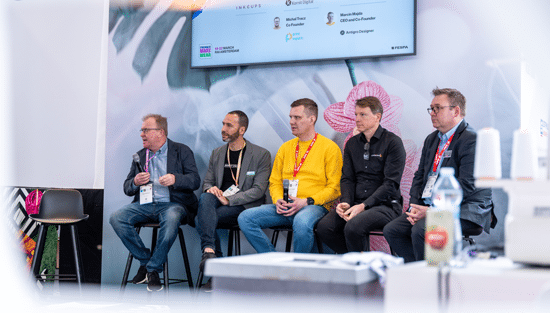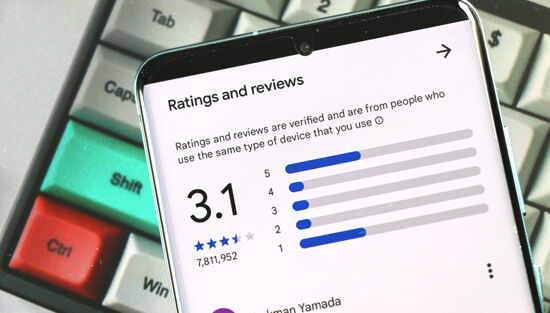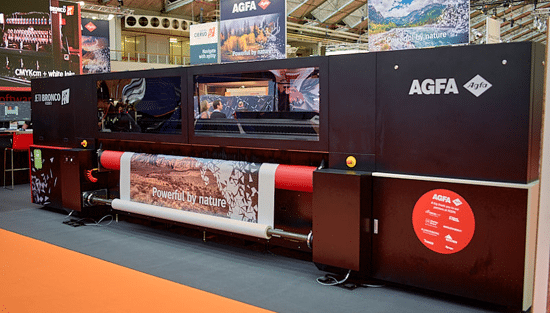What is the practical value of AI for printers today?

Artificial intelligence (AI) has been one of the most talked-about technologies of the last few years, and for good reason. But as expectations begin to be tempered, printers are starting to ask: what is the real, practical value of AI today?
From creating art in moments to writing essays at the press of a button, AI has demonstrated capabilities that once seemed like science fiction. But for printers, the question isn’t about chasing futuristic possibilities. Instead, it’s about understanding how AI can help streamline operations, improve productivity and improve customer service. What are the benefits? AI can be incredibly useful, but only when applied thoughtfully and safely.
The current state of AI
AI has reached something of a turning point. After rapid advancements and widespread adoption across numerous industries, progress is beginning to stabilise. We’re entering a phase where the capabilities and limitations of AI are clearer, allowing businesses to use it more responsibly.
The initial introduction of AI was chaotic, with developers pushing boundaries faster than users could adapt. It prompted repercussions: for example, recruiters decrying AI-written CVs and cover letters. We’ve also seen the closure of AI loopholes, with numerous legal battles and new restrictions addressing concerns about copyright and unoriginal content.
Newspapers have taken LLM (large language model) developers to court for scraping their articles without permission, while AI checkers are increasingly used to detect machine-generated text.
At the same time, privacy and ethical considerations are of concern: companies are tightening policies on how AI can be used and ensuring data is handled more securely. This is vital for industries like print, where sensitive client information is often part of the process.
Now, as AI adoption becomes more measured, companies and individuals are learning how to integrate these tools effectively into what they do without overpromising on their capabilities. For printers, this stabilisation means AI can be seen for what it is: a helpful tool rather than a fundamental disruptor.
How printers can use AI today
Now expectations are tempered, we can focus on AI’s most reliable applications. For print businesses, the real value of AI right now is as a desk assistant. It can be used for streamlining tasks, improving efficiency and providing quick, useful and usable insights. AI-powered desk assistants are becoming indispensable for professionals across industries.
Tools like ChatGPT, Google Gemini and Perplexity are excellent examples. They help users draft ideas, plan projects and access information quickly, saving valuable time. Gemini – formerly Bard – works in a similar way to ChatGPT, but was developed by Google.
You can use it as a desk assistant to generate initial drafts of marketing emails or customer communications. Equally, you can rapidly summarise technical documents, such as compliance guidelines for eco-friendly printing. Want to brainstorm ideas for new print services or promotional campaigns? AI can help.
Tools like Perplexity are designed for quick, accurate research. Unlike traditional search engines, these tools provide concise answers and relevant links, making them ideal for answering business queries or staying up to date on industry trends. They can help you to gather insights or market trends or what competitors are offering, or to research materials and suppliers. If you print t-shirts, you could start with a simple query such as ‘What are the best website for bulk t-shirt orders?’
Learn to embrace new AI features
The latest versions of LLMs, including ChatGPT-4 and Gemini, have introduced new features that make them even more practical. These include improved integration with other tools you may use, such as Microsoft Office, Google Workspace and numerous CRM systems. These can really streamline how you work.
They’ve also got better at understanding the context of what you want to do. These tools can handle more complex prompts, making them better at summarising lengthy documents or generating structured plans. At the same time, they’ve added capabilities across different modes, with newer models able to process text, images and even audio inputs, opening up creative possibilities for industries like print. You can create visual mock-ups of print designs by combining text and image prompts or quickly extract key points from customer briefs that include a mix of text and diagrams.
Best practice in using AI
AI’s limitations are now clearer, allowing businesses to use it more safely and efficiently. Here’s how printers can navigate its use without danger:
- Don’t rely on AI for your final output: AI is excellent for generating ideas or drafts but not for producing final, customer-facing content. Always review and refine AI-generated work to ensure it aligns with your brand and standards. You could use AI to draft a promotional email about a new print service, but have a human review the content for tone, accuracy and originality.
- Protect sensitive information: Avoid inputting confidential or proprietary data into AI systems, as some tools may store or use that data to improve their models. Opt out of data-sharing settings wherever possible. Instead of feeding an entire client contract into an AI tool, summarise the key points yourself and use AI to reformat or refine your summary.
- Use AI just for planning: AI is best suited for creating frameworks, outlines and initial ideas. For example, you can ask AI to generate a project timeline or suggest steps for launching a new service, but the detailed execution should remain in human hands. You could generate a checklist for setting up a new print service, such as digital foil stamping, then refine it with input from your team.
AI isn’t about world-changing revolutions, it’s about making everyday tasks easier. There are simple yet impactful ways printers can use AI right now such as content creation, customer support, workflow improvements, training and development that are safe, secure and useful. It’s increasingly clear that AI’s value lies in practical, focused applications.
For printers, AI is not about replacing human expertise but about complementing it. When used thoughtfully, AI can save time, improve efficiency and create new possibilities. By embracing its practical uses and respecting its limitations, printers can harness AI to drive steady, sustainable improvements in their business.
Become a FESPA member to continue reading
To read more and access exclusive content on the Club FESPA portal, please contact your Local Association. If you are not a current member, please enquire here. If there is no FESPA Association in your country, you can join FESPA Direct. Once you become a FESPA member, you can gain access to the Club FESPA Portal.
Recent news

The personal touch: visit Personalisation Experience’s SmartHub Conference 2025
Join the SmartHub Conference at Personalisation Experience next month to stay ahead of the latest tech and trends.

How to build brand trust using customer reviews
Reviews can benefit or damage your business’s reputation. From spreading the word to social proof, here is why reviews matter and what you can do to manage your customer reviews to improve your brand’s reputation.

Regulation guidance: Extended Producer Responsibility
Extended Producer Responsibility (EPR) is now in effect. What does it mean for those in the print industry? Sustainability consultant Rachel England outlines everything you need to know.

How to maximise the automation of your production workflow
Workflow automation has evolved beyond basic file prep, now encompassing job submission, prepress, and postpress. Printers automate to boost productivity, cut waste, and address skill shortages. Implementing tailored automation, from RIPs to MIS, optimises throughput and profitability, minimising human intervention.